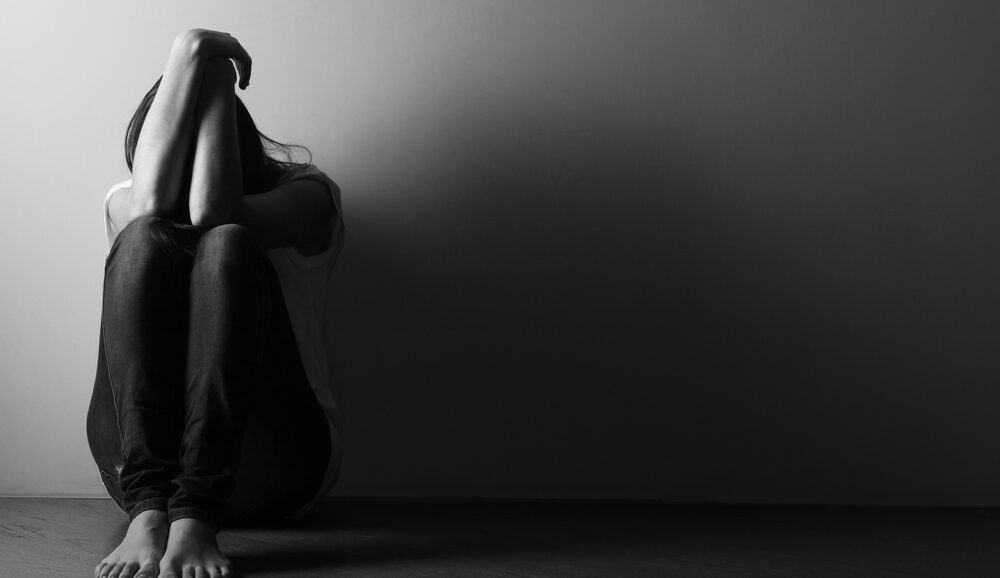Editor's note: If you or someone you know is dealing with self-harm or suicidal ideation, trained counselors are available 24/7 via phone, text or chat at 9-8-8, the Suicide and Crisis Lifeline.
An unprecedented decline in youth mental health was called "the crisis of our time" by U.S. Surgeon General Vivek Murthy in 2021 -- well before the pandemic's effects could be factored into that prognosis. The trend had been building for a while: Between 2007 and 2018, the suicide rate among 10- to 24-year-olds rose by 57%, according to the National Institutes of Health.
Psychological distress across all ages increased during the pandemic. In 2022, 49,369 U.S. residents killed themselves -- the highest number of suicides in a year ever recorded nationwide. That figure included a still-growing number of young people, especially children of color and poor children, according to data from the Centers for Disease Control and Prevention.
Since she began working with teens 20 years ago, Michele Berk, PhD, assistant professor of psychiatry and behavioral sciences, has watched levels of self-harm behaviors continue to increase.
Berk has written about ongoing efforts to involve families in group intervention and leads two programs at Stanford Medicine that provide services for suicidal youth. One program focuses on safety planning with teens at risk for self-harm behaviors and their parents. The other program provides what's called Dialectical Behavior Therapy, an intensive six-month long psychotherapy program, group- and individual-focused, that includes all-hours telephone support.
It's a need that mirrors the "always-on" state in which today's young people are growing up, absorbing stimuli from the ever-present screens they hold before their faces, Berk believes.
"When I was that age, you'd go home from school and maybe you'd call up your friend on your old landline," Berk said. "Now there's just nowhere to escape the things coming at you nonstop on your smartphone."
September is Suicide Prevention Month, and experts like Berk have insights into why young people are struggling. Though she has theories on the bigger-picture problems -- including how living a dual digital-analog life affects the developing adolescent brain -- she knows there is no single cause of suicidal behavior nor one single cure-all.
Berk recently spoke about the mental health crisis and suicide -- the country's third-leading cause of death for adolescents and young adults. She discussed what we know and don't know about what leads our youngest and most vulnerable to consider self-harm and suicide.
Why does this crisis persist?
There's no one clear answer to why suicide rates continue to go up. That's why it's so challenging to lower the rate. But with the teens I work with, typically there are problems with their mood and difficulty regulating negative emotions. A suicide attempt or self-injury behavior is a way to regulate negative emotions and/or to escape from extremely painful emotions that the teen doesn't have alternative coping strategies to manage. So when we work with kids who are suicidal, we try to understand what feels unbearable or intolerable and teach them other ways they can help themselves feel better that don't involve self-harm.
How much are smartphones and social media to blame?
There is a high potential for contagion among teens who are vulnerable. If they become aware that another teen has been engaging in self-harm behavior, either within their own peer group or through social media, they are very vulnerable to imitating that behavior. With social media and access to all sorts of information online, there's so much more exposure to that content. Back in the day, you would only know stuff about your own particular friends if they chose to tell you. Now, everybody knows so much about each other, and about a million strangers, in an instant. The problems from school follow them home; they continue on social media. Kids today are constantly bombarded with it 24/7 -- there's no escape.
What can parents do to protect their kids from that exposure?
It's not realistic to go to an extreme of taking teens' phones away because then they are missing out and feeling disconnected to things that give them hope or happiness or make their life feel worth living. It could make things worse. We will often talk to parents about helping kids navigate that safely -- to say, "They're going to be on social media. They're going to be talking to friends on the phone." Let's try to make that safer versus cutting them off entirely. We also talk with teens about how to communicate with peers safely, without talking specifically about self-harm or suicidal thoughts. Most teens are willing to do this because they care about their friends and want to help versus unintentionally harm them.
How can a parent identify a child at risk?
It can be really hard. There are a lot of teens with risk factors, but aren't able to predict exactly which one will attempt suicide at any given moment. It is often a very impulsive act that is hard to predict in advance. There is data showing that often people make the decision to attempt suicide five minutes or less before they actually do it. So even they don't know they're going to do it. Even for teens with ongoing risk factors like depression or those facing chronic stressors like bullying, it's still difficult to know whether they're going to hurt themselves that particular day or not.
One of the things we do around suicide prevention with individual families is talk a lot about trying to insert as many roadblocks to self-harm as possible. Watching and monitoring them, making sure they don't have access to lethal means and just making it that much harder for them to do something. You can never 100% eliminate the risk, but you can keep making it harder for them to do it.
What do you want people to know about suicide risk that they might not?
It's OK to talk to your struggling loved one about it. Let them know that someone is listening and what they're experiencing is not so scary or taboo that someone won't talk about it with them. Let them know that you're thinking about them and you care about them. It's always a positive thing to let them know they're not alone. I think also people don't realize that restricting or blocking access to means of self-harm is so critical and that they need to be proactive about putting those barriers in place.
Another thing is that people who are suicidal need treatment. When someone reaches that level, it means there are serious mental health issues going on that need to be addressed. It's not something that will just go away on its own. In all likelihood, with treatment they'll get better. They need to learn tools for how to cope with stress and painful emotions in a safe way. Treatment can really help people learn tools so they don't have to feel hopeless or feel that self-harm or death are the only ways to help themselves.
The modality I work with, DBT (Dialectical Behavior Therapy), teaches young people a lot of skills for helping them navigate really intense negative emotions and learn how to give themselves some relief from that. It also focuses on building a life worth living, helping the person feel excited and engaged in their life to the point where death does not seem like an option to them anymore.
Photo: Stanislaw Mikulski






